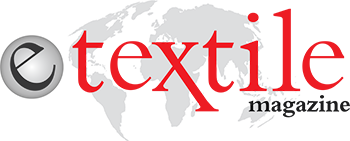Mem Tekstil: We Should Target Branding
Mem Tekstil, which joined the textile industry with a production capacity of 20 machines and 20 thousand spindles in 1998, has started its production in its second plant in 2004 in Kahramanmaraş Industrial Zone. Introducing the knitted fabrics production facility with a capacity of 30 tons per day in 2012, the company has completed the integration the same year with Turkey’s most modern dye-house investment. Since 2013, Mem Tekstil has been taking firm steps towards the future as a reliable partner for global brands with its strong infrastructure.
In this issue of our Textile Technology magazine, where we have treated the developments in the yarn sector, we made an interview with the Technical Manager of Mem Tekstil, Cenap Aktepe.
Mem Tekstil is among the largest manufacturers in the production of yarn in the Turkish textile industry. In this sense, what are the most important features that distinguish your company’s products from those of other brands? Which products of yours are the most demanded?
Since the day it was founded, Mem Tekstil has expanded its product range and has become a fully integrated facility by both increasing its market share and investing in new technologies. The most important features that distinguish us from other companies are our particularity in choosing machine park (we prefer brands renowned in their field), high quality of our products, and sustaining quality with fully equipped physical and chemical laboratories for quality assurance. Thanks to also our wide and flexible machine park, and our ability to respond quickly to the customer demands, especially in the mix and melange fabric groups are features that distinguish us from other companies.
Can you tell us about Mem Tekstil’s market domination in Turkey, and your export figures? Which countries do you mainly export to? What kind of feedback do you get from companies?
Mem Textile dominates the market especially for compact, blend and melange yarns. We export about 21 million dollars of yarn and knitted fabric annually. European countries (especially Italy, Portugal, Spain, Germany, Serbia, France, Bulgaria, Greece, and Ukraine) constitute the most important part of our exports. We also export to Iran, Tunisia, Morocco, Israel, and Azerbaijan. We have good relations with the countries we export to, and we receive positive feedback.
What do you care about when investing in machinery and technology? How do you ensure sustainability and quality in your competitiveness?
We prefer the global brands renowned in their field, especially in choosing our machine park. We plan the investments and modernizations, which we need to make according to the market development and customer demands. As Mem Tekstil, we have always been the pioneer in the industry. We have made the first investments in compact facility and independent AIRJETs under one roof In Turkey. We have been the first to produce combed blended yarn in our mixed fabric plant. In short, when we make a new investment, we are making feasibility studies by aiming to produce new and different, which have not been tried too often in the market.
What do innovation and R&D mean to Mem Textile ? Can you tell us about your activities in this area?
Innovation and R&D are very important concepts, which must be regarded in these competition conditions, and serious budgets must be allocated in order to survive. As Mem Tekstil, we have been designing new knitted fabrics with the advantage of our integrated facility. The fact that we have a large machine park and the special selection of machines allow us to design new knitted fabric structures. Until this day, more than 500 new R&D fabrics (knitting) have been designed and marketed. We continue to receive positive feedback from our customers.
In your opinion, what is the relationship between the Turkish textile industry and education? What kind of studies and innovations should be made to make headway?
First of all, education should be dealt with very urgently. More problems arise in finding qualified staff every day. With the advent of technology, the adaptation to the industry by new people from technical high schools and engineering faculties, and their interest in the textile industry are decreasing day by day. Currently, the textile engineering departments at universities do not seem to be pleasing at all. With students not preferring this department, faculties close them due to lack of interest from students. And the students focus on marketing and sales rather than production, and try to sell a product they do not know about. In addition, universities need to be affirming and intertwined with the industry. If this partnership can be achieved, new graduates will be able to adapt to new technologies, and start their business life with upto-date information. We should also benefit from the advantage of being close to the European market. We should turn to high value added products and target branding.

Can you tell us about your investments and your targets for 2019?
Mem Textile has knitting dye facilities, which include of 144,000 spindle rings, the open-end system with 4,400 rotors, the Airjet with 1920 spindles, 165 circular knitting machines and a capacity of 40 tons/day production. In addition, a new airjet yarn machine with 2880 spindles and two 12-color rotation printing facilities (with a full-fledged pattern engraving section and a laboratory) began to be assembled. It is planned to be operational in the first quarter of 2019. In addition, after the 2019 ITMA, digital printing investment is also on our agenda.
Interview: Kübra Karaca











